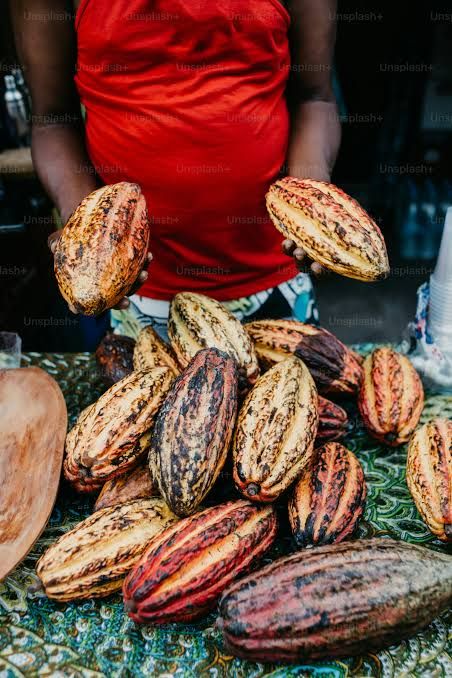🍫 Favorable West African Weather Hammers Cocoa Prices Despite Long-Term Deficit Fears
Cocoa futures saw sharp declines this week as favorable growing conditions in West Africa raised hopes for improved crop yields, leading to bearish sentiment in global cocoa markets. On Wednesday, ICE New York July cocoa contracts (CCN25) dropped by -2.65%, closing down $263, while ICE London cocoa futures (CAN25) fell -3.14%, down £202 — hitting their lowest levels in over two weeks.
🌧️ Rainfall Outlook Triggers Market Reaction According to forecaster Vaisala, moderate to heavy rainfall has persisted across major cocoa-growing regions of West Africa and is expected to continue through the week. This improves the short-term outlook for cocoa crops in countries like Ivory Coast and Ghana, the world’s top producers. These weather improvements have come at a time when cocoa prices had been rallying on fears of prolonged drought, quality concerns, and a historic supply shortage.
📉 Inventory Recovery Pressures Prices Adding to the pressure, ICE-monitored cocoa inventories in U.S. ports have rebounded to a 9.25-month high of 2.36 million bags, up significantly from the 21-year low of 1.26 million bags recorded in January. This signals improved short-term supply availability, weakening bullish sentiment.
🚢 Ivory Coast Export Pace Slows There is still support for prices in the form of slowing cocoa exports from the Ivory Coast. While cumulative exports since October have increased 6.4% YoY to 1.66 MMT, the pace has moderated sharply compared to the +35% surge seen in December 2024. In Nigeria, April cocoa exports fell -11% year-over-year, adding some upward pressure to long-term price outlooks.
🍃 Quality Concerns Linger Over Mid-Crop Despite better weather, quality issues persist in the Ivory Coast’s current mid-crop harvest. Cocoa processors report that 5–6% of mid-crop beans are substandard — far higher than the 1% during the main crop season. The late arrival of rains is being blamed for poor bean development. The mid-crop, running April–September, is projected at 400,000 MT, down -9% from last year.
📉 Consumer Demand Declines on High Prices Consumer demand for chocolate and cocoa-based products has begun to falter:
- Hershey reported Q1 sales down 14%, citing rising cocoa and tariff costs.
- Mondelez International also flagged weaker snack demand amid inflation concerns.
- Barry Callebaut AG cut its annual sales forecast, citing pricing pressures.
Additionally, Q1 cocoa grindings, a key indicator of demand, dropped:
- North America: -2.5%
- Europe: -3.7%
- Asia: -3.4%
📊 Global Supply Outlook Still Tight Despite this week’s price pullback, supply concerns remain in the background:
- The International Cocoa Organization (ICCO) recently revised its 2023/24 global deficit to -494,000 MT, the largest shortfall in 60 years.
- Global production is estimated to have dropped -13.1% YoY to 4.38 MMT.
- Stocks-to-grindings ratio stands at 27.0%, a 46-year low.
Looking ahead to the 2024/25 season, ICCO forecasts:
- A modest surplus of 142,000 MT — the first in four years
- Production recovery of +7.8% YoY to 4.84 MMT
✅ Key Takeaway Cocoa prices are facing short-term headwinds from improved West African weather and recovering inventories, but long-term concerns persist around quality, global deficits, and structural demand shifts. The market is poised between optimism for crop recovery and the reality of strained global supply chains, setting the stage for continued volatility in the months ahead.
Follow & Subscribe:
👉 Africa Agri Market on LinkedIn for the latest updates and insights.
🌐 Visit us at www.africa-agri-market.com for more information!
